
- Home
- India
- World
- Premium
- THE FEDERAL SPECIAL
- Analysis
- States
- Perspective
- Videos
- Sports
- Education
- Entertainment
- Elections
- Features
- Health
- Business
- Series
- In memoriam: Sheikh Mujibur Rahman
- Bishnoi's Men
- NEET TANGLE
- Economy Series
- Earth Day
- Kashmir’s Frozen Turbulence
- India@75
- The legend of Ramjanmabhoomi
- Liberalisation@30
- How to tame a dragon
- Celebrating biodiversity
- Farm Matters
- 50 days of solitude
- Bringing Migrants Home
- Budget 2020
- Jharkhand Votes
- The Federal Investigates
- The Federal Impact
- Vanishing Sand
- Gandhi @ 150
- Andhra Today
- Field report
- Operation Gulmarg
- Pandemic @1 Mn in India
- The Federal Year-End
- The Zero Year
- Science
- Brand studio
- Newsletter
- Elections 2024
- Events
Unsung heroes of history: Why we must seek out, celebrate alternative voices

History can be selective. Many lives, less ordinary, slip into oblivion owing to a multitude of reasons: lack of documentation, historiographers’ biases, or simply being in the wrong place at the wrong time. This often means that the contributions of many political and cultural figures are forgotten or overshadowed by the stories of eminent personalities — call them the usual suspects, if...
History can be selective. Many lives, less ordinary, slip into oblivion owing to a multitude of reasons: lack of documentation, historiographers’ biases, or simply being in the wrong place at the wrong time. This often means that the contributions of many political and cultural figures are forgotten or overshadowed by the stories of eminent personalities — call them the usual suspects, if you will. This is the reason why you may have heard and read about Rabindranath Tagore ad nauseam but would be hard-pressed to place Fakir Mohan Senapati. You may recall everything Jawaharlal Nehru said or did, but would remember precious little about his own sister Vijaya Lakshmi Pandit or Lala Lajpat Rai or Sheikh Abdullah or Sarojini Naidu.
Reams have been written about Mahatma Gandhi, but very little about Kamaladevi Chattopadhyay, who convinced him to include women in the salt satyagraha during the freedom movement. Thankfully, the pursuits and passions of some unbiased biographers have brought to light the lives and legacies of these overlooked figures in the first half of 2024. A string of recent books has sought to redress this anomaly and invisibilisation, offering us an opportunity to explore the stories of these unsung, little-known heroes, who have remained on the periphery of history, some as mere footnotes.
The unfairness of how history is recorded and remembered becomes particularly stark when it comes to women achievers, especially if they happen to be public figures. In a federal country as diverse as India, the ascension of women to the position of Chief Minister in various states are important milestones in its political history. Despite facing deeply ingrained patriarchy, these women shattered glass ceilings, and left their own imprint on the political ethos of these states. But their stories are still waiting to be unearthed, acknowledged, and celebrated.
“The politics of history writing is such that for every story it makes, there are so many that it breaks,” writes Pallavi Rebbapragada, journalist and public policy consultant, in Nandini Satpathy: The Iron Lady of Orissa (Simon & Schuster India), which seeks to celebrate the story of a woman whose journey has been overlooked in the grand narrative of post-Independent Indian history. “The way history is written, a lot of stories get left out. That’s the way it is,” Rebbapragada tells The Federal.
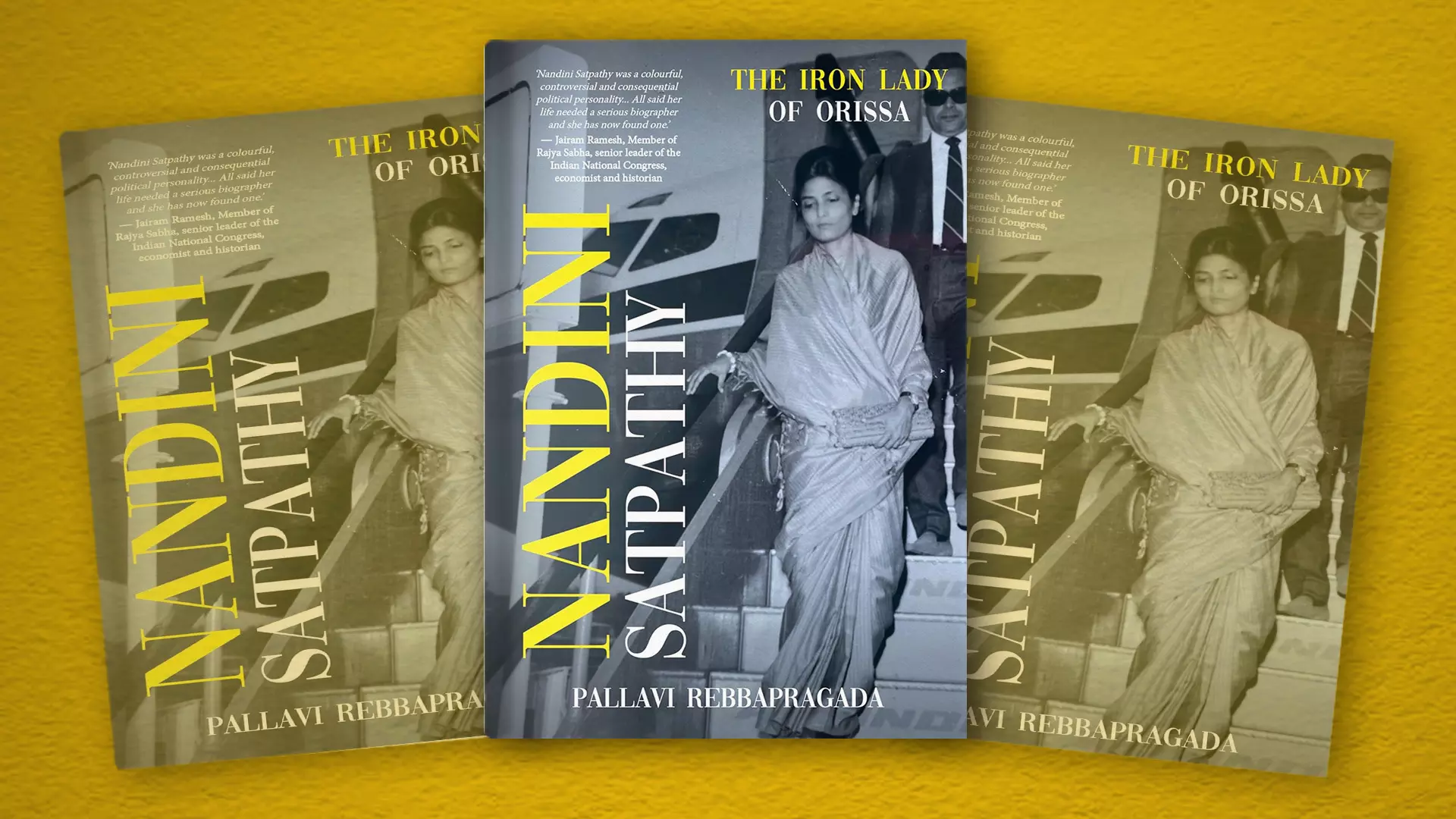
Pallavi Rebbapragada in Nandini Satpathy: The Iron Lady of Orissa seeks to celebrate the story of a woman whose journey has been overlooked in the grand narrative of post-Independent Indian history.
Written with journalistic flair, and the stylistic flourish of a fiction writer, the biography pieces together the remarkable, and untold, story of the first woman CM of Orissa (now Odisha) — whose name has been lost to the mists of time, slipped between the cracks of history — through the memory of a dying generation; most of Satpathy’s contemporaries lost their lives during the pandemic. It’s far from a hagiography; it neither glorifies Satpathy (1931-2006) nor vilifies her opponents. Objectivity, she clarifies early on, is not an ideal, but a moral imperative. “It’s a neutral book that’s written as a celebration of Satpathy’s life. This is how I think she should be remembered,” says Rebbapragada.
“There is a certain context in which people live. We live in a certain era. In a certain culture. When we argue about history on Twitter (now X), we forget that history has a lot of context and depth,” adds Rebbapragada, who stumbled upon Satpathy’s name for the first time in an obituary written by Khushwant Singh in 2006, in which he, among other things, “shamed her for her drinking problem”. This struck her as odd since Singh himself took pride in drinking. Though Singh is one of her favourite writers, and she relished reading his columns, she felt this was “no way to reduce a woman’s life like this”.
The obit stayed in her memory. Many years later, in 2019, when she was writing a report on the Trinamool Congress and the Biju Janata Dal’s attempts at increasing women’s representation in politics by reserving seats for them, she returned to the story. “That’s when I realised that this story needs to be told. Hers was a life of highs and lows, and she is an inspiration for GenZ,” says Rebbapragada, who also laments the fact that Senapati, Utkala Byasa Kabi (Odisha’s Vyasa), who stood his ground when Rabindranath Tagore urged Orissa and Assam to use Bangla as their official language (while Assam succumbed, Orissa did not budge), has not got the national attention he so richly deserves.
Similarly, Sheikh Abdullah (1905-1982), often referred to as the “Lion of Kashmir,” was a central figure in the political history of Jammu and Kashmir, but there is hardly any book about him, especially in English, that gives us a sense of his life and times. Chitralekha Zutshi’s book, Sheikh Abdullah: The Caged Lion of Kashmir (HarperCollins India) does exactly that. The detailed biography provides a nuanced understanding of his role in the region’s history. Abdullah’s political awakening was sparked by the oppressive Dogra regime’s discriminatory policies against the Muslim majority in Kashmir. In 1932, he founded the All Jammu and Kashmir Muslim Conference, which aimed to address the socio-economic and political grievances of the Kashmiri Muslims. However, recognising the need for a broader, more inclusive platform, he rebranded it as the National Conference in 1939, advocating for a secular, democratic, and inclusive society.
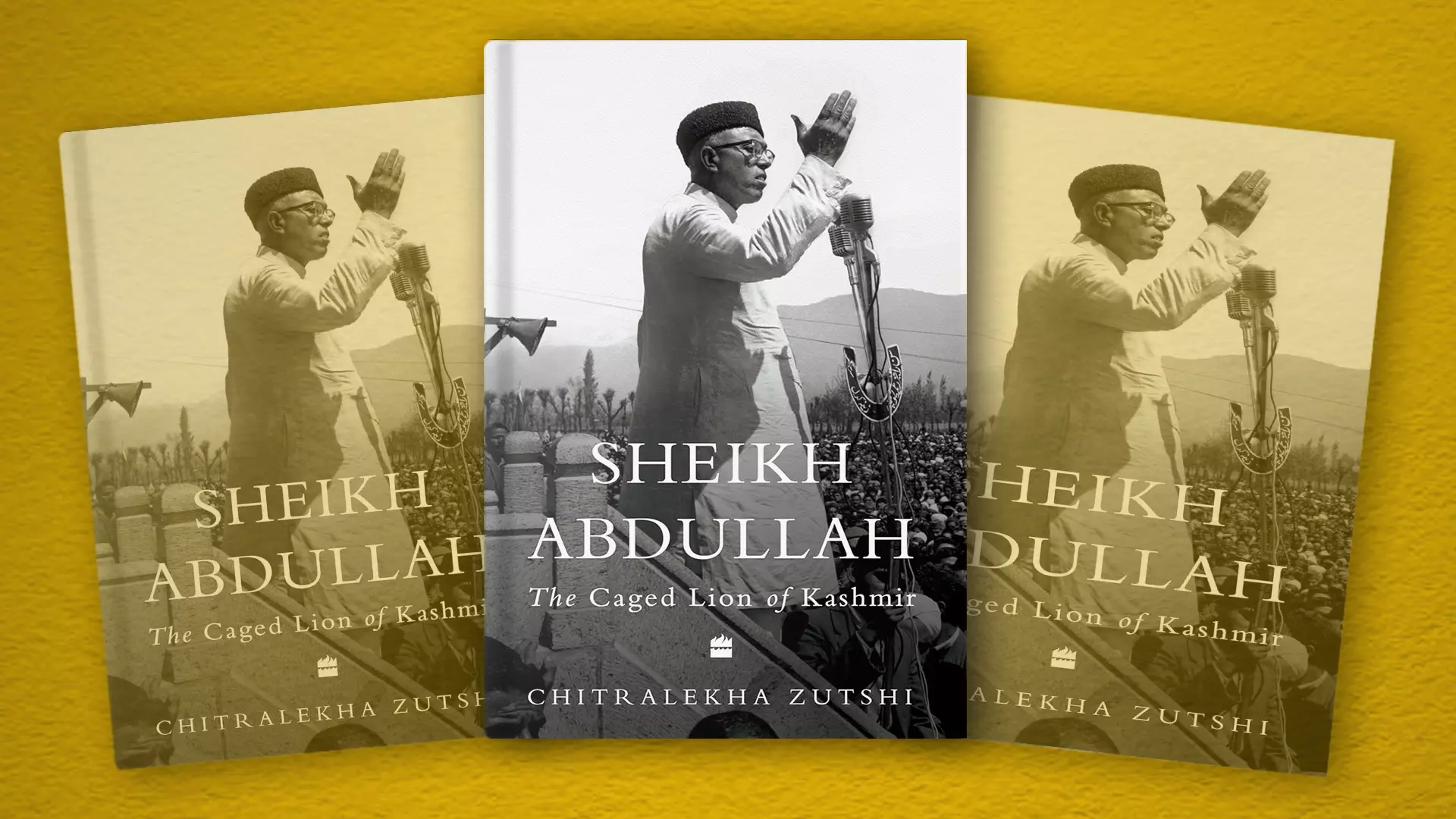
Chitralekha Zutshi’s book, Sheikh Abdullah: The Caged Lion of Kashmir provides a nuanced understanding of his role in the region’s history.
The most critical period in Abdullah’s political career was during the tumultuous years surrounding India’s independence in 1947. As the princely states faced the dilemma of joining either India or Pakistan, Jammu and Kashmir’s strategic situation demanded careful handling. Abdullah supported the state’s accession to India, influenced by his secular ideals. His stance was key in Maharaja Hari Singh’s eventual decision to accede to India, albeit under contentious circumstances that led to the first Indo-Pak war.
“I wanted to tell his story in the context of the history of the Indian subcontinent and discuss the key role he played in shaping federalism and secularism. He struggled to reconcile his religious identity with his national identity. He was also influenced by larger global currents of communism and socialism,” says Zutshi, associate professor of History at the College of William and Mary, USA, adding that unlike other leaders of the period, Abdullah didn’t leave behind a large corpus of writing, which made her task somewhat difficult. “As a populist leader, he was flawed but a very compelling figure,” she says. The ‘caged lion’ in the title refers to his substantial years in prison, but Zutshi says she was also metaphorically caged, in many ways.
In Kamaladevi Chattopadhyay: The Art of Freedom (HarperCollins), Nico Slate, a historian who studies democracy and social movements in the United States and India, pays a tribute to the multifaceted personality who played a crucial role in India’s cultural renaissance. Kamaladevi (1903-1988) was a freedom fighter, social reformer, and cultural activist who revived Indian handicrafts and handlooms. Slate’s book details her relentless efforts to preserve India’s cultural heritage and uplift artisans. Her confrontation with Mahatma Gandhi during the Salt March of 1930 is particularly noteworthy.
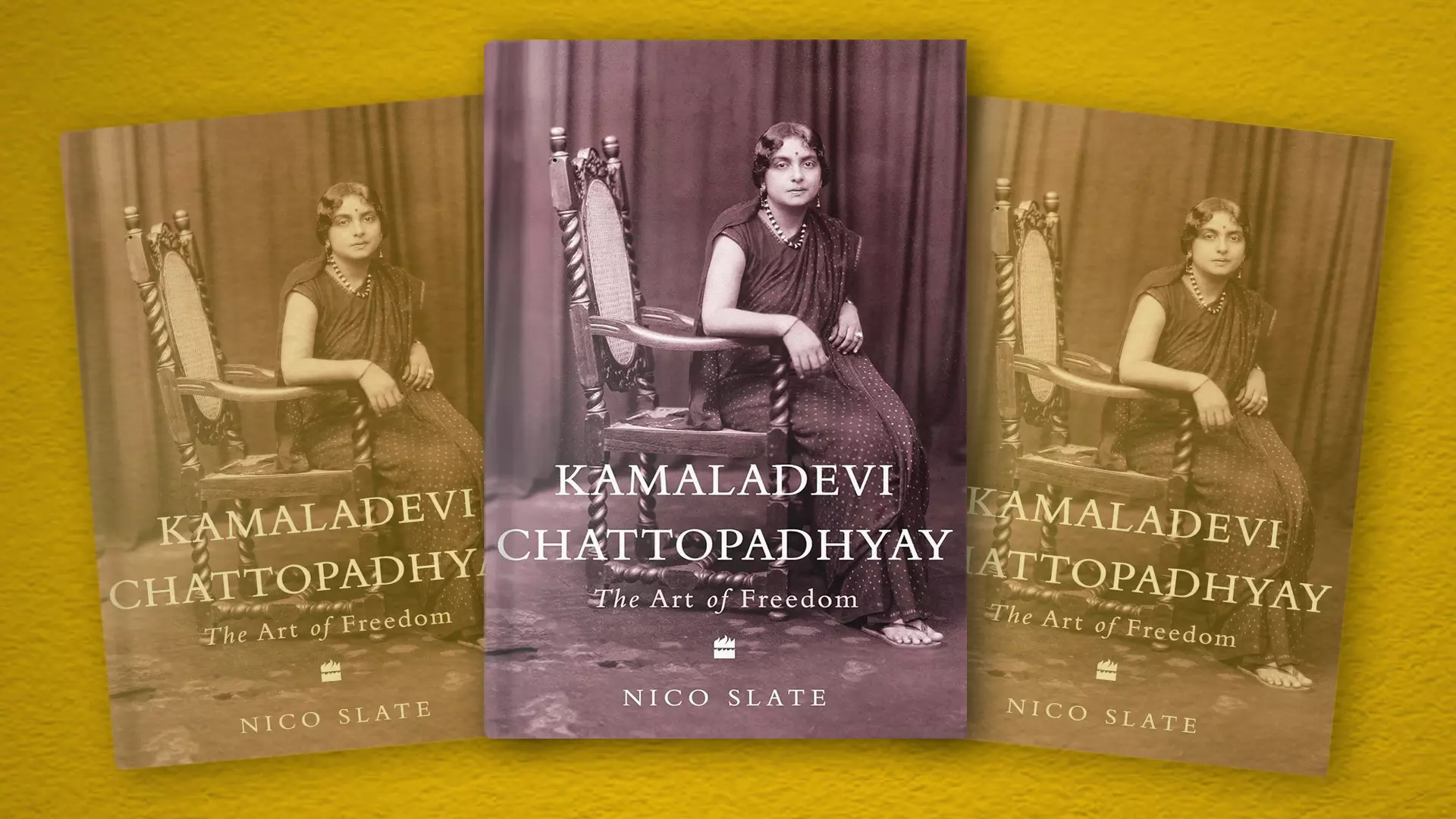
In Kamaladevi Chattopadhyay, Nico Slate pays a tribute to the multifaceted personality who played a crucial role in India’s cultural renaissance.
Kamaladevi’s insistence on including women in the salt protests was a big moment that broadened the scope of the civil disobedience movement. Slate details this interaction, illustrating how Kamaladevi’s advocacy helped galvanise female participation in the struggle for independence. As the leader of the All-India Women’s Conference (AIWC) and a prominent figure in the Congress Socialist Party, Kamaladevi championed various social causes. Slate provides a comprehensive account of her leadership in these organisations, emphasising her efforts to address issues such as women’s education, economic independence, and social reforms. Her pioneering work with refugees during the Partition of India in 1947 underscores her humanitarian commitment.
In his painstakingly researched biography, simply titled Vijaya Lakshmi Pandit (Penguin), Manu Bhagavan, professor of History and Human Rights at Hunter College and the Graduate Center, the City University of New York, tells the story of a woman who not only broke barriers in her own country but also courted global acclaim. Described by Eleanor Roosevelt as “the most remarkable woman” she had ever met, Pandit’s charm and intelligence made her a respected figure in global diplomatic circles. Marlon Brando, the iconic actor, once called her the woman he admired most in the world. Ordinary American citizens, in awe of her speeches, would forgo their usual routines to hear her speak. Pandit’s political career began in earnest when she joined the Indian National Congress and actively participated in the freedom struggle against British colonial rule.
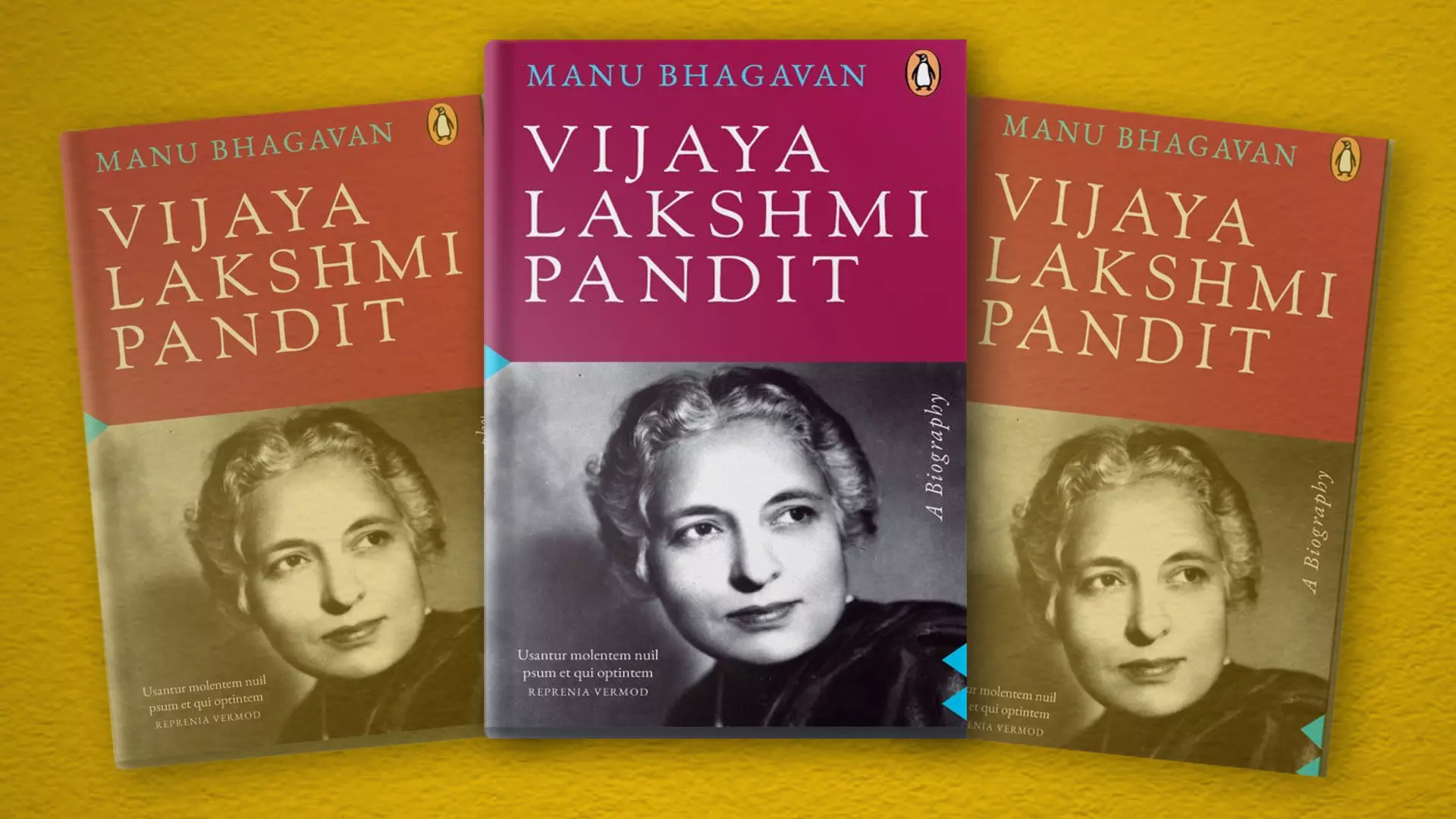
In the biography Vijaya Lakshmi Pandit, Manu Bhagavan tells the story of a woman who not only broke barriers in her own country but also courted global acclaim.
Her arrest in 1932 for civil disobedience marked the beginning of a series of incarcerations. After India gained independence in 1947, she became the first woman to hold a cabinet position in independent India, serving as the Health Minister. Later, she was appointed as India’s first ambassador to the Soviet Union; the way she tackled Cold War geopolitics earned her more admirers. She went on to serve as India’s first ambassador to the United Nations. In 1953, Pandit became the first woman elected President of the United Nations General Assembly. Her tenure was marked by her strong advocacy for peace and disarmament, as well as her efforts to promote human rights. Reading her illuminating biography that dwells on her many achievements, you really wonder why history has been so unfair to her.
Bhagavan writes about the brief love affair between Pandit and Syud Hossain, the first Indian ambassador to Egypt, and how their marriage was annulled after Mahatma Gandhi’s intervention. Syud Hossain is also one of the subjects of a book on the fellowship between five friends — freedom fighter and barrister Asaf Ali, his wife Aruna, and their friendship with Sarojini Naidu, Hossain and Syed Mahmud — during the freedom movement. Former diplomat TCA Raghavan’s Circles of Freedom: Friendship, Love and Loyalty in the Indian National Struggle (Juggernaut) looks at their intimate and cerebral relationship, weaving together anecdotes from their lives as well as their response to major political events, including the Quit India movement.
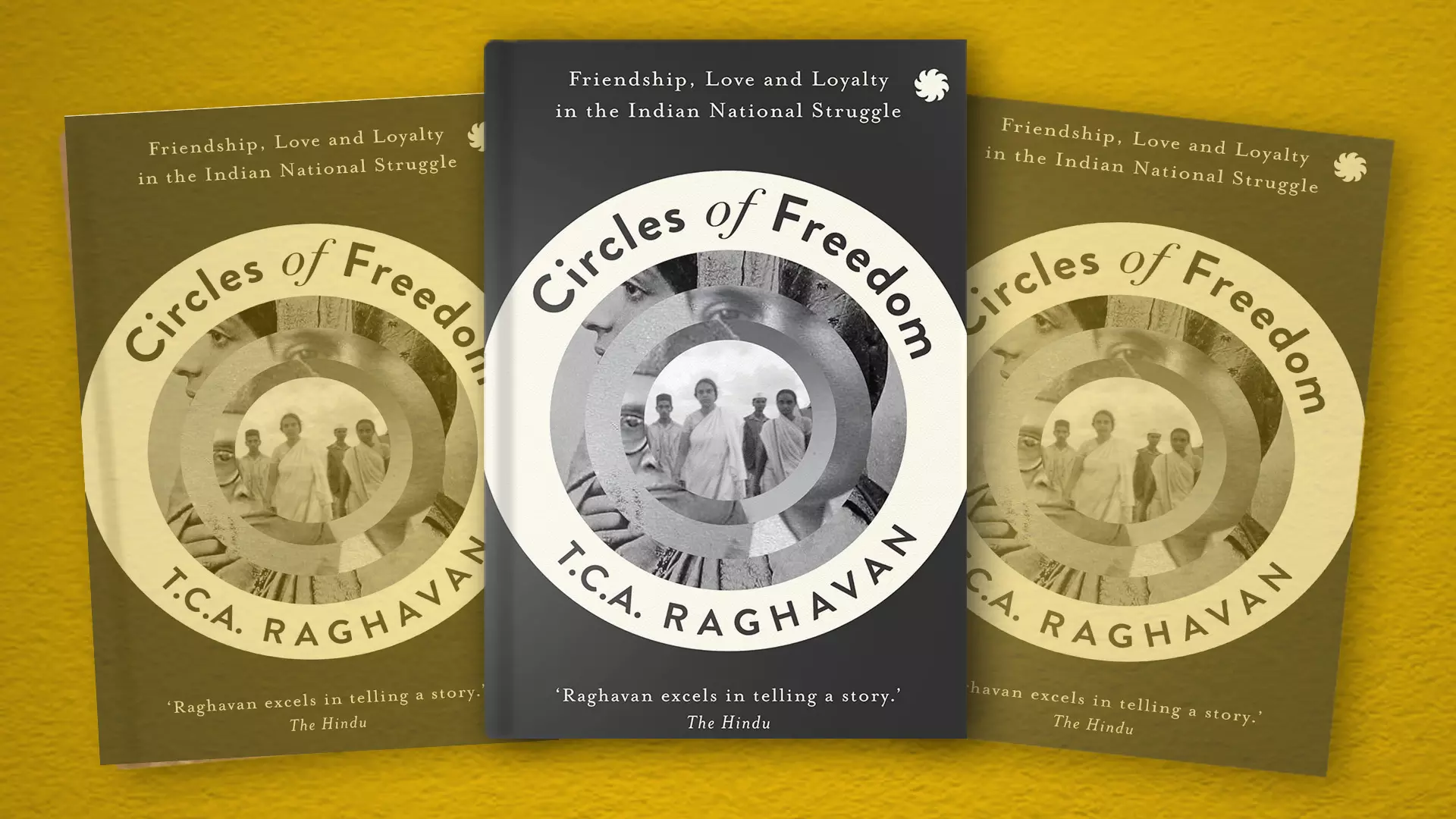
TCA Raghavan’s Circles of Freedom looks at the little known aspects of Asaf Ali's life.
Asaf Ali exemplified the challenges faced by moderate Muslims, caught between the suspicions of the Congress and the disapproval of their own community in the years before Partition. His marriage to the revolutionary Aruna Asaf Ali sparked a debate on the most effective path to freedom — constitutional reform or radical action. Raghavan writes that Naidu, a poet with a remarkably charismatic personality, had charmed all three men, who were infatuated with her. Her friendship with Asaf Ali and his circle deepens our understanding of the personal connections that fuelled the struggle for independence.
Vanya Vaidehi Bhargav, a historian of modern South Asia, challenges the simplistic portrayal of Lajpat Rai as merely a freedom fighter or a Hindu nationalist icon in Being Hindu, Being Indian: Lala Lajpat Rai’s Ideas of Nationhood (Penguin Books). She underlines the need for a nuanced understanding of his ideology and its evolution over time, drawing from a wide range of historical sources to situate Rai’s ideas within the broader context of Indian nationalism in the early 20th century.
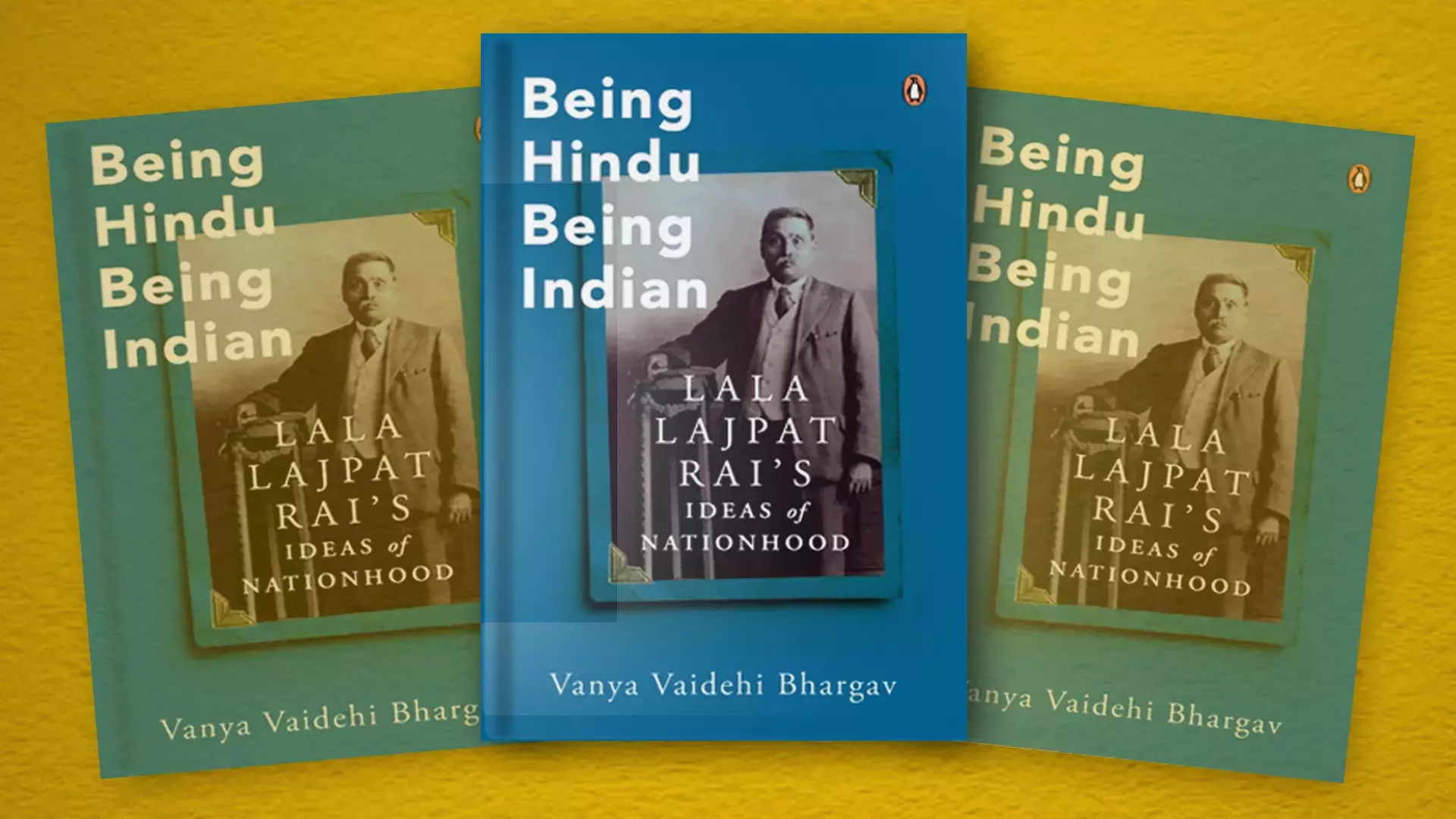
Vanya Vaidehi Bhargav, a historian of modern South Asia, challenges the simplistic portrayal of Lajpat Rai as merely a freedom fighter or a Hindu nationalist icon in Being Hindu, Being Indian.
This allows for a deeper appreciation of the complexities and contradictions inherent in his political thought. Acknowledging the appropriation of Lajpat Rai by the Hindu Right, she cautions against reducing his legacy to a single ideological strand. Instead, she argues for a more exhaustive analysis of his contributions to Indian nationalism, avoiding the simplistic binary of ‘extremist’ versus ‘moderate’ when discussing Rai’s political stance.
In Vagabond Princess: The Great Adventures of Gulbadan (Juggernaut), Ruby Lal, Professor of South Asian Studies in the Department of Middle Eastern and South Asian Studies at Emory University, Atlanta, unearths the fascinating life of Princess Gulbadan, the daughter of Emperor Babur, the founder of the Mughal Empire, who is best known as the author of Humayun-Nama, the account of the life of her half-brother, Emperor Humayun. Having arrived in northern India from Kabul in the early years of the Mughal Empire, Gulbadan’s experiences were far from the sheltered existence typically associated with princesses. Confined to a harem established by her nephew, Emperor Akbar, a young Gulbadan yearned for freedom and the exuberant lifestyle she was used to in Kabul.
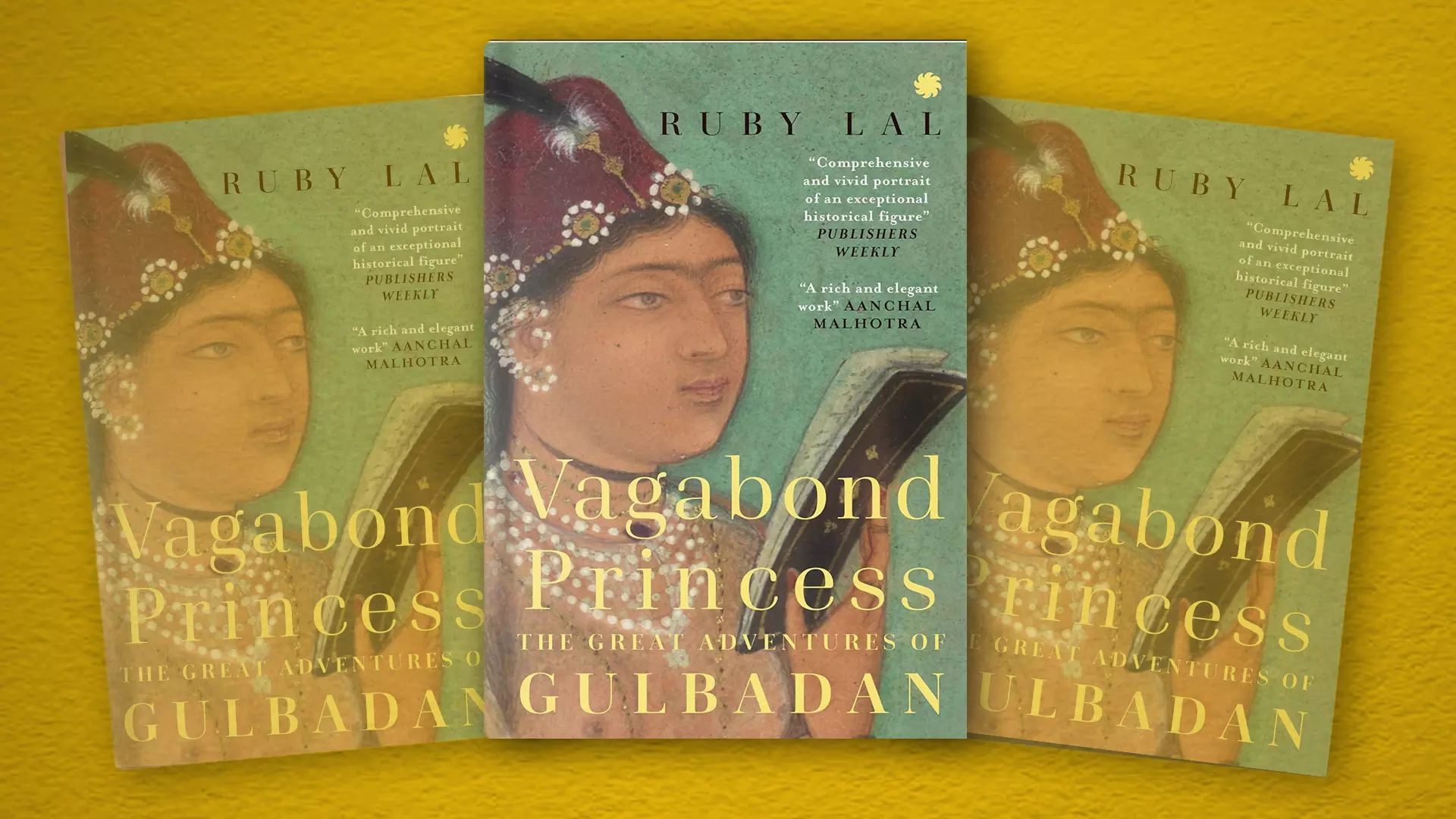
In Vagabond Princess, Ruby Lal unearths the fascinating life of Princess Gulbadan, the daughter of Emperor Babur.
With Akbar’s approval, she embarked on an extraordinary pilgrimage to Arabia, leading a group of harem women on a daring journey across land and sea. It was unthinkable at the time. The pilgrimage, however, was not without its perils. The women’s pilgrimage was deemed ‘unislamic’ by the authorities, which led to their forced return; they also braved a shipwreck in the Red Sea. Upon her return, Gulbadan penned Aḥval-i Humayun Padshah (The Life of King Humayun) or Humayun-Nama, her long-forgotten memoir, and the sole surviving work of prose by a woman of her era. This invaluable text offers a glimpse into the life of a Mughal princess, her experiences, and the multicultural society she inhabited. However, a portion of the book remains missing, lost to history or deliberately redacted by those who sought to silence her voice. Lal reconstructs Gulbadan’s world and restores her place in Mughal history dominated by men.
The story of Gandhian and freedom fighter Usha Mehta, who founded the Secret Congress Radio during the Quit India Movement, broadcasting messages of freedom and inspiring the masses to resist British rule, was captured in Usha Thakkar’s 2021 book, Congress Radio: Usha Mehta and the Underground Radio Station of 1942; it got more audience earlier this year, when a film, directed by Kannan Iyer, streamed on Amazon Prime. There are scores of many such figures across the length and breadth of India who need to be spotlighted in some way or the other. History, often written by the victors or those in positions of power, is not a monolith. By seeking out alternative voices, we can challenge these power dynamics and give their due to those whose stories have been silenced or erased from historical accounts.
